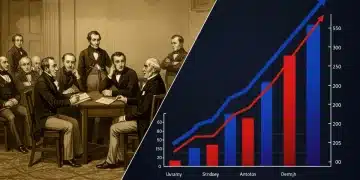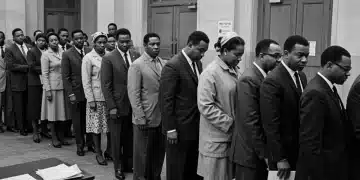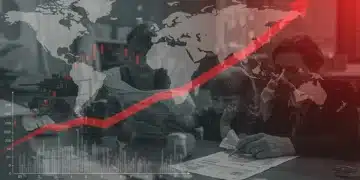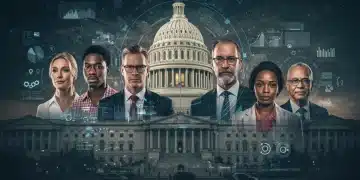US Elections & Economic Policy: 2024-2025 Transition

As the nation looks towards the significant 2024-2025 transition, understanding how past US presidential elections shaped economic policy becomes critically important. Every four years, the choice of leadership not only redefines social and political landscapes but also fundamentally redirects the economic trajectory of the United States, impacting everything from individual household finances to global trade relations.
Historical Precedents: Roosevelt to Reagan’s Economic Shifts
Examining historical presidential transitions reveals distinct patterns in economic policy. From Franklin D. Roosevelt’s New Deal to Ronald Reagan’s supply-side economics, each era brought profound changes. These shifts were often a direct response to prevailing economic conditions, yet their implementation was heavily influenced by the incoming administration’s ideological framework and priorities.
For instance, Roosevelt’s response to the Great Depression involved massive government intervention, creating public works programs and regulatory bodies. This marked a significant departure from laissez-faire policies. Decades later, Reagan’s election ushered in an era of deregulation, tax cuts, and reduced government spending, based on the belief that such measures would stimulate economic growth and reduce inflation.
The New Deal’s Lasting Impact
The Roosevelt administration, elected during the throes of the Great Depression, fundamentally reshaped the role of government in the economy. His policies aimed to provide relief, recovery, and reform.
- Social Security Act (1935): Established a national system of social insurance for Americans, providing economic security for the elderly and unemployed.
- Works Progress Administration (WPA): Created millions of jobs for unemployed Americans, investing in infrastructure and public services.
- Glass-Steagall Act (1933): Separated commercial and investment banking, a key measure to prevent future financial crises.
Reaganomics and Supply-Side Theory
Ronald Reagan’s presidency, beginning in 1981, introduced a new economic philosophy known as Reaganomics. This approach focused on reducing government influence and stimulating production.
- Tax Cuts: Significant reductions in income and capital gains taxes, aimed at encouraging investment and spending.
- Deregulation: Easing of government rules on industries, intended to reduce business costs and foster innovation.
- Reduced Government Spending: Efforts to cut non-military government expenditures, though defense spending increased significantly.
Clinton and Bush Eras: Navigating Globalization and Crises
The presidencies of Bill Clinton and George W. Bush each faced unique economic challenges and opportunities, shaping policies that reflected a globalizing world and the onset of financial crises. Clinton’s era saw robust economic growth, while Bush navigated the aftermath of dot-com bust, 9/11, and the early stages of the 2008 financial crisis.
Clinton’s administration focused on deficit reduction and free trade, leading to the North American Free Trade Agreement (NAFTA). This period was characterized by technological innovation and sustained job growth. George W. Bush, conversely, initiated significant tax cuts and increased spending on defense and domestic security, particularly after the September 11th attacks. His second term was largely dominated by efforts to address the looming housing market collapse and the subsequent financial meltdown.
Clinton’s Fiscal Discipline and Trade Expansion
The Clinton years (1993-2001) were marked by a commitment to fiscal responsibility and expanding international trade. This led to a period of unprecedented economic prosperity.
- Deficit Reduction: Policies aimed at balancing the federal budget, resulting in a surplus by the end of his term.
- NAFTA Implementation: Facilitated free trade between the US, Canada, and Mexico, aiming to boost economic ties.
- Technology Boom: The internet’s rise fueled significant economic expansion and job creation in new sectors.
Bush’s Tax Cuts and Crisis Response
George W. Bush’s presidency (2001-2009) began with significant tax cuts and later pivoted to crisis management following major national and economic shocks.
- Economic Growth and Tax Relief Reconciliation Act of 2001 (EGTRRA): Implemented broad tax reductions across income brackets.
- Post-9/11 Spending: Increased federal outlays for defense and homeland security, impacting the national budget.
- TARP Program (2008): Enacted in response to the financial crisis, providing government funds to stabilize the banking system.
Obama and Trump: Recovery, Regulation, and Trade Wars
The presidencies of Barack Obama and Donald Trump present contrasting approaches to economic policy in the wake of the Great Recession. Obama inherited a devastated economy and focused on recovery through stimulus and financial regulation. Trump, on the other hand, prioritized deregulation, tax cuts, and a protectionist trade agenda.
Obama’s administration passed the American Recovery and Reinvestment Act, a large stimulus package, and the Dodd-Frank Act to reform the financial system. His tenure saw a gradual economic recovery and significant reforms in healthcare. Trump’s presidency brought the Tax Cuts and Jobs Act of 2017, aiming to boost corporate investment, and initiated trade disputes with several countries, most notably China, impacting global supply chains and domestic industries.
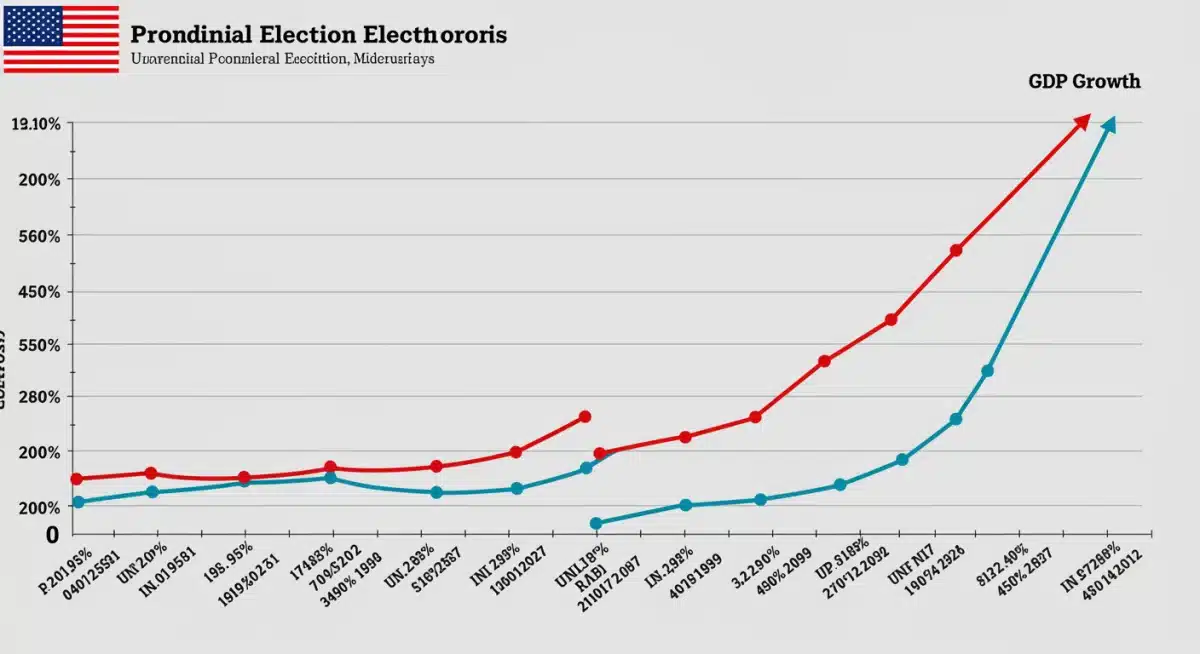
Obama’s Economic Stimulus and Regulation
President Obama’s economic strategy was largely defined by his response to the 2008 financial crisis and the subsequent recession.
- American Recovery and Reinvestment Act (2009): A substantial economic stimulus package designed to create jobs and spur economic activity.
- Dodd-Frank Wall Street Reform and Consumer Protection Act (2010): Overhauled financial regulation to prevent a recurrence of the 2008 crisis.
- Affordable Care Act (ACA): Aimed to expand health insurance coverage, impacting healthcare spending and the labor market.
Trump’s Tax Cuts and Trade Protectionism
Donald Trump’s economic policies centered on reducing taxes and renegotiating trade agreements, driven by an “America First” ideology.
- Tax Cuts and Jobs Act of 2017: Significantly lowered corporate and individual income tax rates, intended to stimulate business investment.
- Trade Tariffs: Imposed tariffs on imported goods, particularly from China, to protect domestic industries and reduce trade deficits.
- Deregulation Efforts: Reduced environmental and business regulations across various sectors, aiming to decrease compliance costs.
Key Economic Indicators and Presidential Influence
Every presidential election cycle brings promises of economic prosperity, but the actual impact on key indicators varies widely. Historically, presidents have influenced GDP growth, employment rates, inflation, and national debt through their fiscal and monetary policies. The administration’s stance on taxation, government spending, and regulatory frameworks directly shapes these outcomes. For example, periods of significant infrastructure spending can boost GDP and employment, while tax cuts might stimulate private investment but potentially increase national debt.
The Federal Reserve also plays a crucial role in managing the economy, but its independence can be tested by presidential rhetoric and appointments. The interplay between presidential economic agendas and the Fed’s monetary policy is a constant factor in the nation’s financial health. Understanding this dynamic is essential when considering how past US presidential elections shaped economic policy.
GDP Growth and Presidential Terms
GDP growth often reflects the overall health of the economy, but presidential policies can significantly influence its trajectory. Different administrations prioritize different growth drivers.
- Investment-driven Growth: Policies promoting capital investment and business expansion.
- Consumption-driven Growth: Policies aimed at increasing consumer spending through tax breaks or social programs.
- Export-driven Growth: Trade policies designed to boost international sales of domestic goods and services.
Employment Rates and Policy Decisions
Unemployment and job creation are paramount concerns for any administration. Policies can directly or indirectly impact the labor market.
- Infrastructure Projects: Direct job creation through government-funded construction and maintenance.
- Small Business Support: Programs and tax incentives aimed at fostering entrepreneurial growth and job creation.
- Education and Training: Investments in workforce development to match skills with industry needs.
The Role of Fiscal and Monetary Policy in Transitions
Presidential transitions are critical junctures for both fiscal and monetary policy. Fiscal policy, controlled by the executive and legislative branches, involves government spending and taxation. Monetary policy, managed by the Federal Reserve, focuses on interest rates and the money supply. While the Fed operates independently, presidential appointments to its board can subtly shift its long-term direction, thus impacting the nation’s financial stability and growth prospects.
A new administration might push for significant tax reform, altering revenue streams and corporate incentives. Simultaneously, changes in federal spending priorities, such as increased investment in green energy or defense, directly influence various sectors of the economy. These fiscal decisions often interact with the existing monetary policy framework, creating a complex economic environment that new presidents must navigate.
Fiscal Policy Levers
Fiscal policy is a powerful tool wielded by the government to influence the economy, with direct impacts on citizens and businesses.
- Taxation: Changes in income, corporate, or capital gains taxes can stimulate or slow economic activity.
- Government Spending: Allocations to infrastructure, defense, social programs, and research can create jobs and drive demand.
- Budget Deficits/Surpluses: The balance between government revenue and expenditure, impacting national debt and future economic flexibility.
Monetary Policy Interactions
While independent, the Federal Reserve’s monetary policy is often influenced by the broader economic environment shaped by presidential fiscal decisions.
- Interest Rates: The Fed’s primary tool to control inflation and stimulate economic growth.
- Quantitative Easing/Tightening: Large-scale asset purchases or sales to influence long-term interest rates and market liquidity.
- Inflation Targeting: The Fed’s strategy to maintain stable prices, which can be challenged by fiscal policies that significantly boost demand.
Looking Towards the 2024-2025 Transition: Potential Economic Agendas
As the 2024-2025 transition approaches, potential presidential candidates are already outlining their economic visions. These agendas often reflect stark differences in approach, from government intervention to free-market principles. Key areas of focus typically include inflation control, job creation, national debt management, and international trade relations. The outcome of the election will determine the direction of these policies, with significant implications for businesses, investors, and everyday Americans.
For example, one candidate might advocate for increased social spending and wealth redistribution, while another might propose further tax cuts and deregulation to spur private sector growth. These contrasting philosophies highlight the critical nature of the upcoming election in determining the nation’s economic future. The decisions made during this period will inevitably add another chapter to how past US presidential elections shaped economic policy.
Inflation and Cost of Living
The rising cost of living and inflation are central concerns for voters, and candidates often propose different strategies to address these issues.
- Supply-Side Solutions: Policies aimed at increasing production and efficiency to lower prices.
- Demand-Side Management: Fiscal policies that either stimulate or cool consumer demand.
- Trade Policies: Strategies to reduce import costs or protect domestic industries, impacting prices.
Future of Trade and Global Economy
The next administration’s stance on international trade will have far-reaching effects on global supply chains, domestic industries, and consumer prices.
- Free Trade Agreements: Potential for new agreements or renegotiations of existing ones.
- Tariff Policies: Continuation or reversal of existing tariffs, impacting import costs and competitiveness.
- Geopolitical Alliances: How trade policy aligns with broader foreign policy objectives.
| Key Policy Area | Historical Impact & Future Outlook |
|---|---|
| Taxation | Presidents like Reagan and Trump implemented significant tax cuts, aiming to stimulate growth. Future transitions will likely debate corporate vs. individual tax rates. |
| Government Spending | Roosevelt’s New Deal drastically increased spending, while others sought austerity. The 2024-2025 period will face debates on infrastructure, social programs, and defense outlays. |
| Regulation | Periods like the New Deal and Obama’s era saw increased financial regulation, while Reagan and Trump favored deregulation. The next administration will balance economic freedom with consumer protection. |
| Trade Policy | From NAFTA under Clinton to Trump’s tariffs, trade policies shift with each presidency, impacting global relations and domestic industries. Future trade deals are a key election focus. |
Frequently Asked Questions About US Elections and Economic Policy
Presidential elections directly impact economic policy by determining the administration’s fiscal priorities, including taxation, government spending, and regulatory frameworks. The winning party’s platform often dictates the direction of economic legislation and executive actions, influencing everything from job creation to inflation control.
Fiscal policy involves government decisions on spending and taxation, directly controlled by the President and Congress. Monetary policy, managed by the independent Federal Reserve, focuses on interest rates and the money supply. While distinct, presidential appointments to the Fed can influence its long-term direction, creating an interplay between the two.
Past elections have significantly influenced national debt through varying approaches to spending and taxation. Administrations that increase spending without corresponding revenue, or implement large tax cuts, often contribute to higher national debt. Conversely, periods of fiscal austerity or robust economic growth can help manage or reduce debt.
The 2024-2025 transition could face challenges such as persistent inflation, managing national debt, geopolitical trade tensions, and ensuring sustainable economic growth. The incoming administration will need to address these issues with policies that balance short-term stability with long-term prosperity, learning from how past US presidential elections shaped economic policy.
While a president can significantly influence the economy through policy decisions and appointments, they do not have absolute control. Global events, actions by the Federal Reserve, technological advancements, and consumer behavior also play crucial roles. The economy is a complex system with many interdependent variables beyond any single office’s complete command.
Looking Ahead: Economic Trajectories Post-2024
The impending 2024-2025 transition presents a pivotal moment for the US economy. The policy decisions made by the next administration will have lasting implications, shaping the landscape for inflation, employment, and global trade. Businesses and consumers alike should closely monitor proposed economic agendas as the election cycle progresses. Understanding these potential shifts, informed by how past US presidential elections shaped economic policy, is vital for strategic planning and navigating the evolving financial environment in the years to come.

